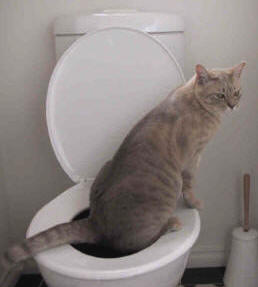The Risks of Disposing Cat Poop in Your Toilet - Preventive Measures
The Risks of Disposing Cat Poop in Your Toilet - Preventive Measures
Blog Article
They are making several good points relating to Can You Flush Cat Poop Down The Toilet? in general in this great article down below.

Intro
As feline owners, it's vital to bear in mind how we dispose of our feline close friends' waste. While it may appear practical to flush pet cat poop down the bathroom, this practice can have destructive repercussions for both the setting and human health and wellness.
Alternatives to Flushing
Fortunately, there are more secure and much more liable methods to dispose of pet cat poop. Think about the following options:
1. Scoop and Dispose in Trash
One of the most typical approach of getting rid of cat poop is to scoop it into an eco-friendly bag and throw it in the garbage. Make sure to use a specialized clutter scoop and take care of the waste immediately.
2. Use Biodegradable Litter
Select eco-friendly cat trash made from materials such as corn or wheat. These trashes are eco-friendly and can be safely taken care of in the trash.
3. Bury in the Yard
If you have a backyard, consider burying feline waste in a marked area away from vegetable gardens and water resources. Make certain to dig deep enough to avoid contamination of groundwater.
4. Set Up a Pet Waste Disposal System
Buy a pet waste disposal system particularly made for cat waste. These systems use enzymes to break down the waste, minimizing smell and environmental impact.
Health and wellness Risks
Along with ecological problems, flushing cat waste can likewise present wellness threats to human beings. Cat feces may consist of Toxoplasma gondii, a bloodsucker that can create toxoplasmosis-- a possibly extreme ailment, particularly for pregnant women and individuals with weakened immune systems.
Environmental Impact
Flushing feline poop presents dangerous virus and bloodsuckers right into the water, posturing a substantial threat to marine ecological communities. These pollutants can negatively impact marine life and compromise water quality.
Conclusion
Responsible pet ownership extends past giving food and sanctuary-- it likewise involves correct waste administration. By avoiding flushing feline poop down the toilet and opting for alternative disposal methods, we can decrease our ecological impact and secure human health and wellness.
Why Can’t I Flush Cat Poop?
It Spreads a Parasite
Cats are frequently infected with a parasite called toxoplasma gondii. The parasite causes an infection called toxoplasmosis. It is usually harmless to cats. The parasite only uses cat poop as a host for its eggs. Otherwise, the cat’s immune system usually keeps the infection at low enough levels to maintain its own health. But it does not stop the develop of eggs. These eggs are tiny and surprisingly tough. They may survive for a year before they begin to grow. But that’s the problem.
Our wastewater system is not designed to deal with toxoplasmosis eggs. Instead, most eggs will flush from your toilet into sewers and wastewater management plants. After the sewage is treated for many other harmful things in it, it is typically released into local rivers, lakes, or oceans. Here, the toxoplasmosis eggs can find new hosts, including starfish, crabs, otters, and many other wildlife. For many, this is a significant risk to their health. Toxoplasmosis can also end up infecting water sources that are important for agriculture, which means our deer, pigs, and sheep can get infected too.
Is There Risk to Humans?
There can be a risk to human life from flushing cat poop down the toilet. If you do so, the parasites from your cat’s poop can end up in shellfish, game animals, or livestock. If this meat is then served raw or undercooked, the people who eat it can get sick.
In fact, according to the CDC, 40 million people in the United States are infected with toxoplasma gondii. They get it from exposure to infected seafood, or from some kind of cat poop contamination, like drinking from a stream that is contaminated or touching anything that has come into contact with cat poop. That includes just cleaning a cat litter box.
Most people who get infected with these parasites will not develop any symptoms. However, for pregnant women or for those with compromised immune systems, the parasite can cause severe health problems.
How to Handle Cat Poop
The best way to handle cat poop is actually to clean the box more often. The eggs that the parasite sheds will not become active until one to five days after the cat poops. That means that if you clean daily, you’re much less likely to come into direct contact with infectious eggs.
That said, always dispose of cat poop in the garbage and not down the toilet. Wash your hands before and after you clean the litter box, and bring the bag of poop right outside to your garbage bins.
https://trenchlesssolutionsusa.com/why-cant-i-flush-cat-poop/

We hope you enjoyed reading our excerpt about How to Dispose of Cat Poop and Litter Without Plastic Bags. Thanks for spending some time to browse our article post. Sharing is caring. Helping people is fun. Thanks a lot for your time. Kindly come by our website back soon.
Click Here Report this page